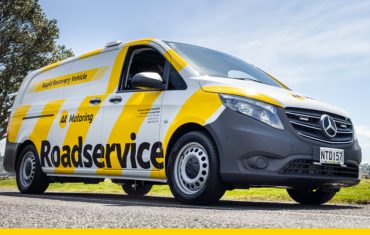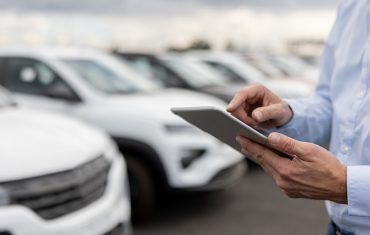
Vehicle leasing and fleet management: much more than funding vehicles
Fleet ManagementEfficient use of vehicles is an important way to improve the performance of large and small businesses. So, choices you make about financing your vehicles and fleet management can be crucial to your business’s success. We’re dealing with these issues every day and we thought it’d be useful to take you through them.
There are a lot of concepts that come into play when it comes to vehicle leasing and fleet management for NZ businesses.
Defining the scope of fleet management
Let’s start with the basics. What is Fleet Management?:
“Fleet Management is a function which allows companies which rely on transportation in business to remove or minimise the risks associated with vehicle investment, improving efficiency, productivity and reducing their overall transportation and staff costs, providing 100% compliance with government legislation (duty of care) and many more.”
There’s a bit of jargon there. But it covers the issues you need to consider when it comes to getting the vehicles you need and using them safely and cost effectively. As you will see, fleet management goes well beyond vehicle leasing.
1. Funding your fleet
Thinking about funding your vehicles should follow closely on from deciding what sort of vehicles you need. Choices you make, when it comes to how you pay for your vehicles, are a crucial part of minimising your business’s running costs.
There are several questions to answer here:
- How do we best finance the type of vehicles we need?
- Should we buy vehicles outright or lease them?
- What other types of vehicle funding are there beyond leasing?
- What does all this leasing jargon mean?
- What type of lease should I chose? Operating? Finance?
- What accounting and tax issues do I need to understand?
Funding a vehicle that suits your business’s needs and finances
We are working on a checklist for you to work through when deciding on vehicles and lease options for your business. The key here, though, is to consider your options carefully with a keen eye on the cost implications of the choices you make.
You’ll notice that our heading reads “needs” not “wants”. This is key. You may want the latest ute from your favourite luxury brand or fancy the top of the line Tesla… Unless there is a branding, capability or performance reason behind your desire that would win your accountant or finance director’s approval, want shouldn’t come into it.
Our advice: consider exactly what type of vehicle you need and then start looking at how best to finance it.
Leasing versus buying a vehicle
Which brings us to the key question: “Lease or buy?” As you will see when you read on, there are a lot of things to consider here.
For most businesses, cost will be the key consideration once they’ve determined their vehicle needs. And, whatever your financing choices, buying outright is likely to cost you more per payment. Why? Because you are financing the value of the vehicle rather than financing use of it for the term of a lease.
But, maybe, the flexibility to sell whenever you want, and modify a vehicle to your needs that comes with owning vehicles is key for you.
Whatever your initial inclination, it’s important to do your due diligence here. Talk to your accountant. Talk to your peers. Talk to fleet management and fleet leasing companies. Make sure you have a full picture of what your choice to buy or lease means for your business.
Leasing versus other types of vehicle funding
Few businesses have the cash on hand to buy new vehicles without some form of financing. So, even if you choose to buy rather than lease, you will need to consider your funding options.
Your options will depend on your business’s situation and vehicle needs.
If you want to own the vehicle long term, they include:
- Financing through a car dealership – essentially a hire purchase agreement with monthly payments.
- A business loan secured against your home from your bank – primarily for owner-operated small businesses.
- A business loan secured against the vehicle you are buying from a finance company or bank.
In most cases bank loans will be cheaper than dealer finance. (Both MBIE and Sorted offer advice on financing vehicles that small business owners may find useful.)
If you choose to lease, your payments are based on your use of the vehicle for the term of the lease.
It’s important to understand your basic options when it comes to leasing a vehicle.
Types of leases — operating and finance leases
The key terms here are: “operating lease” and “finance lease”. And they lead to a key question you need to answer once you have decided to lease rather than buy your vehicles. Operating lease or Finance lease?
Anyone looking to get their business or employees on the road without buying vehicles needs to know the difference between finance and operating leases.
In both you are paying for the use of the vehicle during the lease term. The difference is the risk on the asset value at the end of that lease term. In short:
- An operating lease leaves asset value risk with the lessor – you just hand it back at the end of the term
- A finance lease means you assume the asset value risk at the end of the term – you will owe a residual or ‘balloon’ amount. You can cover it by buying the car yourself or selling it and using the sales proceeds to pay off the residual amount.
Both options have advantages in terms of tax and cash flow. What option suits you will depend on which of these advantages have most value to you and your business.
And you should also consider options that include fleet management services, like our bundled leases for small fleets. These sorts of products offer everything from replacing tyres and looking after vehicle servicing to “Kilometre variation Management”, insurance and Fringe Benefits Tax (FBT) management.
An introduction to leasing and fleet management jargon
Not sure what we mean by “Kilometre variation management”? Wondering where FBT comes into the vehicle leasing picture?
As we said at the beginning, there are a lot of concepts in play when you are considering how to fund your vehicles. And there’s jargon to go with those concepts. We’d encourage you to get your head around it.
Lease payments that bundle fuel, maintenance and other vehicle services are set based on estimated mileage at the start of the lease term.
Kilometre variation management allows for a review during the lease term, recognising that your use of the vehicle may change during your lease term. If your actual use is significantly over or under your original estimations, you can revise the lease payment to avoid owing a lump sum at the end, or to reduce your lease payments.
FBT comes into the lease picture because the use of a vehicle is a “fringe benefit” for your employees, with tax implications. Systems and processes are required to collect and report on usage to complete appropriate declarations for NZ IRD.
We could go on. The key is to make sure you understand the implications of all aspects of any leasing or fleet management arrangement. That means understanding the jargon or working with someone who can explain it to you.
Accounting and tax issues
Whether you are a business owner or a fleet manager, you need to understand the tax implications of how you finance your vehicles, including FBT. Your accountant or finance department is your friend here. But it’s useful to understand the accounting and tax issues that come into play.
Indeed, some major changes to lease accounting standards that took effect at the beginning of 2019 are crucial to understand. These new standards mean that all leases valued over $5000 – operating and finance – must appear on your balance sheet and vehicle running expenses must be split out.
Want to dig into the detail here? We looked at these changes in more depth and we’ve answered some key questions about lease accounting. And Chartered Accountants Australia New Zealand offers a useful overview.
There are two important points to understand:
- The changes don’t undermine the advantages of leasing vehicles.
- And you need to make sure you get some expert accounting input when looking at leasing options.
2. Managing your vehicles
Once you’ve decided to lease, you need to choose your vehicles and manage how they are used.
This is where we move from vehicle leasing to fleet management. (Well, leasing is part of a fleet manager’s responsibilities; so, we haven’t really moved anywhere, but we’re following process here…). There are lots of questions to answer…
- What do you need to look after them beyond making your lease payments?
- What vehicles should you lease to best satisfy your business’s mobility needs?
- When should you be looking to replace them to minimise vehicle costs?
- How do you set yourself up to get maximum value from your fleet?
- How can you minimise running costs and other vehicle expenses over time?
Your responsibilities under a lease
Responsibilities under a lease will vary between lease and fleet management options. Indeed, it may be that you’re working with a fleet manager that handles pretty much everything to do with maintaining your vehicles, short of driving them and ensuring they have plenty of fuel.
In most cases though, you are responsible for looking after the vehicle and making sure that it is in reasonable shape at the end of its lease. And, even if your fleet management company is scheduling all the maintenance, licensing, and so forth, you need to manage getting vehicles in for servicing, etc.
Generally, you will need to look after:
- Making lease payments (obviously)
- Driving responsibly to avoid undue wear and tear
- Servicing and maintenance
- Insuring the vehicle appropriately
- Making sure it is legal – warranted, registered, etc.
- Paying any infringement fines
- Ensuring that it is not modified in a way that your lease prohibits*
*No after-market modifications (sports exhaust, spoilers etc.). Letting staff with a company vehicle modify it is generally not a good idea!
Key trends in the auto industry
We recently took a look at some 2019 vehicles that reflect trends in the auto industry.
While NZ is dragging its feet a little on the adoption of EVs we believe that 2019 is the year when EVs will go mainstream.
We looked at the new Nissan Leaf, the Hyundai Ioniq and Kona EV and the new Tesla Model 3. But EV model choices abound, especially if you are looking for vehicles for short urban trips, as the industry signals a move to electric.
With numbers like Hyundai’s claimed annual running cost for the Ioniq EV of just $240 coming out, you’d be hard put not to at least consider EV options if you’re replacing vehicles in 2019.
Even if you’re not ready to make the leap to an EV or hybrid, new models are bristling with new engine technology that offers improved running costs and safety technology that will reduce the risk of accidents.
When it’s best to replace vehicles
And that brings us to the question of when to replace your vehicles. There are two factors to consider here:
- Capital costs – leasing or ownership costs that decline as the vehicle ages.
- Operating costs – running and maintenance costs that will tend to grow as the vehicle ages.
There will come a time when although an older vehicle isn’t costing much to own or lease it’s become so expensive to keep on the road that you’d be better offer replacing it.
You may have bought vehicles at the end of their lease or be using vehicles that you have long since paid off. They’re no longer costing you much to own. But, especially with the running cost advantages of newer vehicle technology, they might be costing so much to operate that owning them no longer makes financial sense.
Getting value from your vehicle fleet
The key concept here is “total cost of ownership” (TCO) or “whole of life cost” – the Total Vehicle Costs line in our graph. Any vehicle leasing choice need to consider the cost of a vehicle over its useful life, if you are going to get value from your fleet.
When considering vehicle choices, you need to think long term and consider every aspect and implication of your choice. This means covering off a lot of factors. Things like:
- Type of vehicle – model, engine size, fuel option, capacity, reliability, etc.
- Purchase price and finance or lease payments per month
- Insurance, compliance, fuel and servicing costs
- Residual value whether selling or returning it to your leasing company.
Minimising vehicle fleet costs
TCO is a good starting point for a considering ways to minimise vehicle fleet costs. As you have seen, unless you have a comprehensive fleet management contract, lease costs are likely to be the beginning of your cost considerations.
Everything from tyre choice and ensuring drivers keep tyres at the right air pressure to strategic considerations like who is eligible for vehicles in what circumstances are in play when it comes to overall vehicle costs.
3. Managing your drivers
No matter how well you have organised the financing of the vehicles that make your business mobile, facilitating or supporting its operations, driver management is key to efficient mobility.
You need to get your people and any equipment they need they need where they need to be efficiently to minimise costs and ensure your drivers’ safety. There are many variables to consider here:
- Planning and monitoring vehicle use
- Route planning and fuel costs
- Monitoring and improving driver behaviour
- Monitoring vehicle performance and managing servicing
We have touched on the running cost advantages that technology in new vehicles offers. But even if you’re not running the newest vehicles, technology can be your friend in the form of telematics.
The value of embracing telematics technology
We encourage anyone charged with managing a vehicle fleet to embrace telematics technology. It makes managing your drivers’ use of your vehicles so much easier.
But what is telematics? Simply put, telematics is hardware and software that allows you to monitor and track vehicle use and performance.
The data you collect will identify and address issues with routes, fuel consumption, driver behaviour and under-utilised vehicles, etc.
As LeasePlan’s telematics provider, Smartrak, points out, driver behaviour is not just a safety issue it’s a cost issue:
“Drivers with aggressive driving styles will on average spend 10.9% more fuel while experienced drivers can use up to 30% less fuel than a conventional driver.”
Keep your tyres at the correct tyre pressure and you could save 3% in fuel costs while regular oil changes offer a 1-2% saving. These sorts of savings add up across a fleet. And telematics makes achieving them easy.
Telematics isn’t just for big fleets
You might be thinking that telematics isn’t for you. But telematics isn’t just for big fleets. Your leasing and fleet management company can help you implement a telematics solution and enjoy the savings that are available when you truly understand how your drivers are using your vehicles.
4. Managing your risk and safety
One of the key benefits of telematics’ vehicle tracking capabilities is that it offers accident notifications and risk reporting.
This is very important because, as Building Today warned in 2016, vehicles are places of work under health and safety legislation and that means SME owners are responsible for the safety of their drivers. As the article points out, many SME owners don’t consider themselves fleet operators.
They should. Whether you are looking after 5-10 vans, 20 utes or a fleet of hundreds of vehicles, you need to manage the health and safety of your drivers.
Safety and the chain of responsibility
Anyone managing a fleet of vehicles needs to understand the chain of responsibility and their role in it.
As we have previously pointed out:
“Managers’ obligations are very broad. They span a wide spectrum from the condition of your vehicles to the way they’re loaded, the process for keeping maintenance records and even the health of the person behind the wheel.”
The chain of responsibility (COR) covers everything from the workplace culture your drivers operate in to the “grey fleet”, where employees use their own vehicles over which you have no control.
This might sound daunting. And it is. If you have staff using vehicles, health and safety management is a key part of your vehicle fleet management responsibilities.
It’s an area where it can really pay to outsource some fleet management expertise. Professional fleet managers understand the issues and how to manage them with tools like telematics. Tools that can be invaluable in managing issues like driver fatigue.
Whether you are outsourcing the skills and expertise to look after your vehicles or doing it yourself, every SME owner needs to understand their health and safety and COR responsibilities.
5. Sustainable fleet management
At SG Fleet / LeasePlan, we’re focused on achieving efficient and sustainable mobility for our customers. In an ever more environmentally conscious world, the environment credibility of your business can be key to your appeal to customers and employees alike. And more often than not the more sustainable option is the most cost effective.
Just about every issue we have covered here, beyond purely funding related concepts, helps determine the efficiency and environmental impact of your business.
It’s simple really. Efficient vehicle fleet management is more sustainable. The most efficient routes will mean your vehicles use less fuel and reduce your organisation’s emissions. Choosing the most fuel-efficient vehicles that meet your needs will mean fewer running costs and reduced emissions. Managing your vehicles and drivers effectively will reduce costs and emissions.
Going green and reducing vehicle emissions and or embracing the coming EV revolution is likely to make just as much financial sense as environmental sense. And this will make more and more sense as EVs become more and more affordable. Regardless, when you consider options for your next vehicles it might be time to look beyond the fossil-fuel-powered options.
Leasing vehicles and managing fleets
If you’ve read this far, you’ve got a pretty good idea of some of the key issues you need to consider when leasing and managing a vehicle fleet in NZ. There’s a lot to think about. We know. But putting that thought in will pay dividends in reduced vehicle costs.
Even with relatively small fleets you might find the easiest way to meet your transport or “mobility”, as the industry calls it needs is to outsource it to a fleet management company. Easy: they handle everything from vehicle leasing to maintenance and tracking vehicle use. While it’s not your core business, it is theirs.
If you have any questions about vehicle leasing and fleet management in New Zealand, talk to a SG Fleet consultant.
 Driving Insights
Driving Insights




